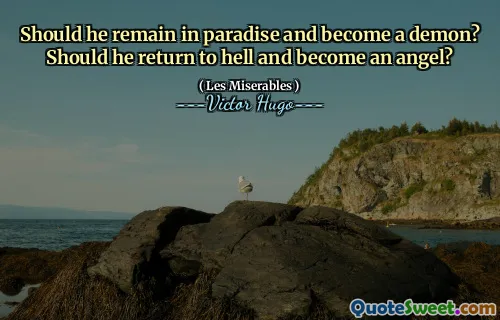What is the cat?" he exclaimed. "It is a corrective. The good God, having made the mouse, said: 'Hullo! I have committed a blunder.' And so he made the cat. The cat is the erratum of the mouse. The mouse, plus the cat, is the proof of creation revised and corrected.
In Victor Hugo's "Les Miserables," a character reflects on the role of the cat in the natural order of creation. He describes the cat as a corrective response to the existence of the mouse, suggesting that the creation of the mouse was a mistake that required rectification. The cat serves as a countersign, addressing what he sees as a flaw in God's design. Through this lens, the existence of both animals illustrates a nuanced perspective on the divine act of creation.
This metaphor deepens the philosophical discourse presented in the book, inviting readers to ponder the nature of existence and divine intent. The idea that the cat is an "erratum" suggests that creation is not perfect, but instead dynamic and subject to change. By presenting the mouse and cat as complementary parts of a larger whole, Hugo prompts consideration of how life balances itself through contrasts and corrections, emphasizing the complexity inherent in the world around us.






